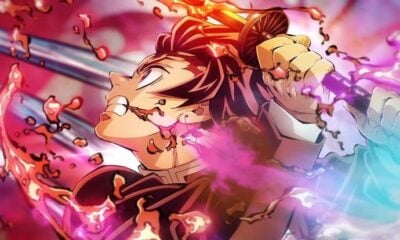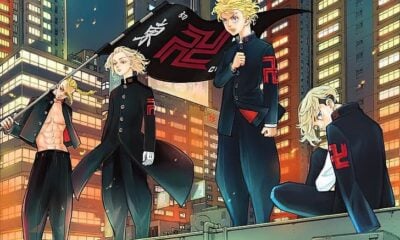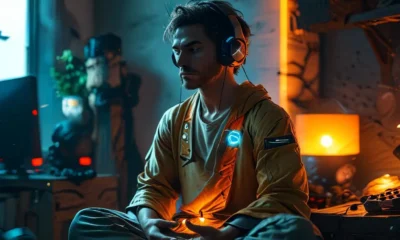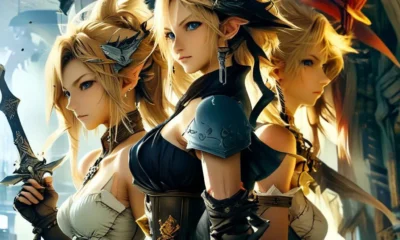Features
The Use of Catholic Themes in ‘Outlast 2’
Editor’s Note: This article was originally published on November 1, 2017.
The conundrum Outlast 2 and many other Catholic-based horror stories have presented
If you’ll bear with me for a moment, I have a personal anecdote that relates to Outlast 2.
When I was 16, I went through one of the biggest religious rites of passage for Catholics: Confirmation, the process in which Catholics are blessed by the Holy Spirit to further strengthen their relationship with God. But before we stand in front of a Priest (or in my case, a Cardinal) and have our foreheads smeared with oil, there are usually classes we take first. These range from bible study, to the history of Catholicism, to learning about the ceremony itself. I had to take two years of these classes before the church said I was ready to be confirmed. I remember nothing from these classes, except for one group activity that raised stereotypical Catholic guilt to a new level.
I was in a large room with about 50 other people my age who were just weeks away from becoming confirmed. This was the last activity of our retreat, and the vibe of the room pulsated with seriousness and uncertainty. A woman stood before us and asked us to help pass out three items to everyone in the room: a folded red paper, a nail, and a list of mortal and venial sins, totaling around fifty. This list contained the standard Ten Commandments and the seven deadly ones, but the rest were designed to make us feel guilt over having sexual feelings for the opposite (or same) sex, guilt over cheating on a math test, or guilt over telling a white lie. She instructed us to punch a hole through that red paper for every sin we had committed on the list, and then to unfold the paper when we were done.
I made around ten holes in the paper. When I unfolded it, a picture of Jesus was staring back at me. “This is what you do Jesus every time you sin,” the woman yelled after the majority of the room had unfolded their papers. The nail, the holes—it all came together. I started laughing. Everyone stared at me. It was all unnecessarily dramatic. Now, 14 years later, I understand what they were trying to impress upon us in classic Catholic guilt fashion; during the rite of Confirmation, there is a brief call-and-response period in which all candidates answer in unison, “I do,” to a few questions, the first being, “Do you reject Satan and all his works and all his empty promises?”
Catholics believe it can be something as simple as a lapse in commitment to one’s faith that allows the devil to take hold of your soul. In the most extreme of cases, this leads to demonic possession. But, the devil persuades you, influences you in such a way that any decision to fall into sin and ultimately reject God is your own fault. It is only through confession, penance, and possibly exorcism that a person can find their way back to God. That is the main theme in Catholic-based horror—the internal struggle between good and evil.
Outlast 2 not only uses that as its main theme to drive the story, but it does so without making use of demonic possession or exorcism. Guilt and the corruption of the soul are two very Catholic tropes that Outlast 2 uses to create its unsettling tone. It presents itself in juxtaposition—the switching back and forth between the Arizona desert and Blake’s Catholic elementary school, Saint Sybil—which establishes the traditional theme of the internal struggle between good and evil, against sin.
Warning: Major story spoilers. Read at your own risk.
While Outlast 2 doesn’t seamlessly tie together the events in the desert to Blake’s visions of the past, both stand on their own to represent the internal struggle with evil. Blake’s visions are more obviously Catholic-oriented than any encounter with Sullivan Knoth or his cult members, but the cult represents the influence of the devil and the perversion of God’s word, while Blake’s memories can be seen as the guilt he constantly carries around with him, and possibly his belief that he is deserving of punishment because of his lapsed faith.
In terms of the cult, they are followers of the Testament of the New Ezekiel, which isn’t that different from a part of the actual Book of Ezekiel, simply for the fact that they both use apocalyptic imagery. Ezekiel wrote his book from exile, after the invasion of Nebuchadnezzar in 596, and spoke of the difficulty keeping people from sinning and worshiping false prophets. Both sub-factions of the Testament of the New Ezekiel in Outlast 2 are exiled, as well, into the desert of Arizona. While both have opposite views concerning the birth of the anti-Christ, Sullivan Knoth, his followers, and the opposing Heretics cult, are the epitome of the Second Commandment, not unlike the exiled peoples of Ezekiel’s time, and are driven by murder and lust. Their representation is not symbolism nor metaphor, but rather a direct representation of all that God warns against in the Old Testament.
Unfortunately for Blake and his wife, Lynn, they get caught up in the apocalyptic hysteria between the two clashing factions. For what can only be described as mystical or divine intervention, Lynn becomes visibly pregnant mere hours into the story’s timeline. The Heretics believe Lynn’s unborn child is the anti-Christ and will do anything to protect her from the Scalled, who want to kill Lynn to prevent the anti-Christ from being born. The one voice of reason in Outlast 2 is a minor character by the name of Ethan, who lost all faith in the Testament of the New Ezekiel when Sullivan Knoth raped and impregnated his 15-year-old daughter, and ordered him to kill the baby because Knoth proclaimed it to be the anti-Christ. Of course, Ethan is killed not to long after Blake meets him, and what symbolic chance at salvation Blake once had is gone.
Lynn is absent the majority of Outlast 2, as the central conflict is for the player to find and save her, so this gives players a chance to get to know Blake more intimately. While the connection between the present and his past as a child enrolled at Saint Sybil isn’t completely clear, given the overall theme of the game those scenes present Catholic guilt in a subtle yet equally sinister way. The game briefly mentions that Lynn was also a student at the same school. She isn’t present in these flashback sequences, but a mutual childhood friend of theirs is: Jessica.
One important scene with kid-Blake and kid-Jessica infers that they have a childhood crush on each other. They wander the halls of their school alone, Blake insisting he has to get home, but Jessica convincing him to stay. Not too long after, the children turn a corner and run into Father Loutermilch, one of their teachers. Loutermilch scolds them for being alone together, laying on the Catholic guilt thick and suggesting that what they were doing—acting like innocent children, really—was shameful in the eyes of God. He then tells Blake he’s free to go since he’s actually a good student that doesn’t get into trouble, but comments on Jessica’s reoccurring behavior problems. Jessica begs Blake not to leave her there alone with Loutermilch, but Loutermilch forces Blake to leave.
While it’s only alluded to, this scene in Outlast 2 is a direct commentary on Catholic priests molesting children, which later escalates into scenes of Jessica hanging from a noose in one of the school hallways. All these scenes together imply that Loutermilch raped and murdered Jessica, staging his crime to look like a suicide. Blake’s feelings toward this revelation are not exactly touched on, but the fact that he’s having these flashbacks at all not only tell players that he blamed himself for her death and still carries that guilt around with him, but also that he has long suspected that Jessica didn’t commit suicide.
From a Catholic perspective, that kind of perversion within the Church is extra disturbing. If these priests who ask us to reject Satan and all his works also succumb to the same sins we are told to confess, then what kind of salvation can the rest of us hope to have? The guilt over our own sins often takes precedence. Blake’s guilt for not doing anything to rescue Jessica is stronger than his repulsion toward Loutermilch. Sullivan Knoth, in some perverted and twisted way, feels guilt over impregnating Ethan’s daughter because it was conceived through sin and because he had the baby killed. The Cardinal that officiated my Confirmation helped protect priests accused of abuse from law enforcement within the Archdiocese of Los Angeles. These are all very different situations, but for Blake, his guilt is on the same magnitude of severity.
That’s the exact conundrum Outlast 2 and many other Catholic-based horror stories have presented: the perception of sin and the guilt that follows. We may think we are doing the right thing, but as evidenced by Sullivan Knoth, his followers, and the Heretics, insanity masquerades as God’s will, even for Blake. Blake misses his second shot at redemption when he fails to save his wife’s life, but by the end of the game, Lynn’s pregnancy comes full-term and Blake is able to save the baby. The sun rises over the horizon, filling the desert town with serene light and warm relief. But, as Blake walks away from the town, cradling the baby in his arms, one question still lingers: is he really holding the anti-Christ? This ending is the ultimate Catholic lesson about the internal struggle between good and evil. Blake won’t ever really know the magnitude of his sins until he is judged by God.

-

 Features4 weeks ago
Features4 weeks agoDon’t Watch These 5 Fantasy Anime… Unless You Want to Be Obsessed
-

 Culture3 weeks ago
Culture3 weeks agoMultiplayer Online Gaming Communities Connect Players Across International Borders
-

 Features3 weeks ago
Features3 weeks ago“Even if it’s used a little, it’s fine”: Demon Slayer Star Shrugs Off AI Threat
-

 Features2 weeks ago
Features2 weeks agoBest Cross-Platform Games for PC, PS5, Xbox, and Switch
-

 Game Reviews4 weeks ago
Game Reviews4 weeks agoHow Overcooked! 2 Made Ruining Friendships Fun
-

 Features2 weeks ago
Features2 weeks agoThe End Is Near! Demon Slayer’s Final Arc Trailer Hints at a Battle of Legends
-

 Features3 weeks ago
Features3 weeks ago8 Video Games That Gradually Get Harder
-

 Game Reviews4 weeks ago
Game Reviews4 weeks agoHow Persona 5 Royal Critiques the Cult of Success
-

 Features2 weeks ago
Features2 weeks agoDon’t Miss This: Tokyo Revengers’ ‘Three Titans’ Arc Is What Fans Have Waited For!
-

 Uncategorized3 weeks ago
Uncategorized3 weeks agoSleep Meditation Music: The Key to Unwinding
-

 Guides2 weeks ago
Guides2 weeks agoHow to buy games on Steam without a credit card
-

 Game Reviews2 weeks ago
Game Reviews2 weeks agoFinal Fantasy VII Rebirth Review: A Worthy Successor?






